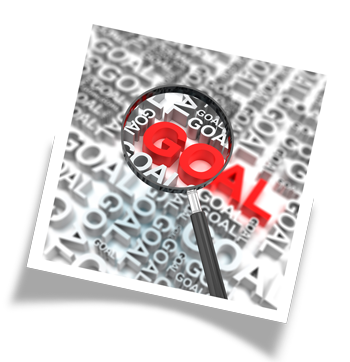No doubt, you may have considered the New Year and what you want to accomplish. In recent decades, many have written about the process of effectively setting goals. Many years ago I memorized the acrostic for S.M.A.R.T. goals:
S – Specific
M -Measurable
A – Attainable/Assignable
R – Realistic/Rewarding
T – Timeable/Tangible
Goal setting functions as a prerequisite to success in most areas of life. Yet sadly, still ninety-five percent of people do not set goals. Who do these ninety-five percent work for? The five percent who do!
The acrostic “S.M.A.R.T.” worked well for me for many years. But NLP provided me with a more effective tool for setting goals. How? The NLP model enables us to go beyond mere “goal setting” into the actual “programming” of our minds to drive us towards our desired goal. How does it do this? The “S.M.A.R.T” model worked quite well but it and others like it lack specificity.
The brain works primarily from our sensory system (pictures, sounds, feelings). The NLP goal setting model addresses this by getting our goal sensory specific. But it doesn’t stop there. For, the brain not only uses the sensory system, it also uses our word meanings that drive the sensory system. For this reason, the NLP Goal Setting Model makes absolutely sure that we language ourselves in such a way as to drive our very neurology and physiology towards obtaining our desired goal.
The specificity of the NLP Goal Setting Model facilitates concentration on what you internally see, hear, and feel. Your attention will direct itself toward external and internal resources necessary in achieving the goal. The NLP model provides the following features as a way to more clearly think about moving from a present state to a desired state.
The following key components enable you to effectively identify your desired state and it begins by eliciting that state even now. Sometimes we call this The Well-Formed Outcome Model.
1) State the goal in positive terms.
Describe the Present Situation and compare it with the desired future goal.
- Where are you now?
- Where do you want to be?
- What do you want?
- State it in the positive (what you want to achieve).
- What are you going toward?
2) Specify the goal in Sensory Based Terms.
- What will you see, hear, feel, etc., when you have it?
- What steps or stages are involved in reaching this goal?
- Engage all of your senses in this description process to employ more of your brain and nervous system.
- Have you broken down your goal into small enough chunks so that each is do-able?
- What are the sizes of the behavioral chunks? Could the size possibly overwhelm you?
3) Specify the goal in a way that you find compelling.
Is the goal compelling? Does it pull on you? Make it a compelling future representation that’s dissociated (When you see your goal make sure you see yourself having obtained your goal.).
4) Run a Quality Control check on your Goal to make sure it is for you in all areas of your life.
- Is the desired goal right for you in all circumstances of your life?
- Is your goal appropriate in all your personal relationships?
- What will having your goal give you that you do not now have?
- What will having your goal cause you to lose?
- Is your goal achievable?
- Does it respect your health, relationships, etc?
Run a quality check to make sure that your goal fits every part. Ask, “Are there any parts of me that objects to actualizing this desired goal?” If so, address those unconscious frames of mind.
Pay attention to how your whole self responds to the question in terms of images, sounds, words, and sensations within you.
5) Self-initiated and maintained.
Is the goal something that you can initiate yourself and maintain?
Test your goal by asking if it is something that you have within your power or ability to do.
- Is it within your control?
Your goal must be something that you can initiate and maintain. It must not be something dependent on other people. Make sure that your goal reflects things that you can directly affect.
- Is it self initiated and maintained?
6) State the Context of the goal.
- Where, when, how, with whom, etc. will you get this goal?
- Is the goal appropriately contextualized?
Test your goal by applying it to a context: when, where, with who, etc. to make sure that it is going to be fitting and appropriate. Readjust your goal to make sure that it fits.
7) State the Resources needed to achieve the goal.
- What resources will you need in order to get this goal?
- Who will you have to become?
- Who else has achieved this goal?
- Have you ever had or done this before?
- Do you know anyone who has?
- What prevents you from moving toward it and attaining it now?
By Dr. Bob Bodenhamer
